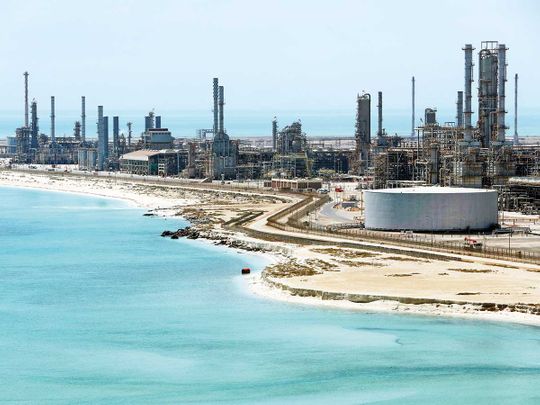
Dubai: Oil exporters including GCC countries are expected to see slower growth prospects, according to the Economic Insight: Middle East Q2 2019 report, produced in partnership by ICAEW and Oxford Economics.
According to the report, oil producers in the Middle East will also see limited growth in the oil sector, the traditional engine of economic growth and a primary source of government revenues, given the anticipated extension of the output cuts by Opec+ to balance the international oil markets. Oil prices are forecast to average around $67 (Dh246) per barrel (p/b) in 2019, down by some 5.6 per cent from the average of $71p/b last year.
In 2019, the non-oil sector will continue to be supported by various pro-growth government initiatives, expansionary budgets and fiscal stimulus plans, especially in Saudi Arabia and the UAE, the two largest GCC economies.
$ 67
average oil prices per barrel forecast for this year“Continued uncertainty in the global oil market means increasing non-oil revenues is vital for regional economies. Governments in the region have been proactive, but they must continue to support their economies with pro-growth initiatives,” said Michael Armstrong, ICAEW Regional Director for the Middle East, Africa and South Asia (MEASA).
The non-oil sector in the GCC is expected to accelerate from an estimated 2.3 per cent last year to 2.6 per cent in 2019. Several proxy indicators of economic activity paint a positive picture, with the credit to the private sector trending up in most GCC countries, while the quarterly average of the Purchasing Managers’ Index (PMI), a gauge of the health of the private sector, continued to show some improvements in Q1 2019 in both Saudi Arabia and the UAE compared to Q4 2018.
5.6 %
drop in average prices this year when compared with 2018“The outlook for Middle Eastern economies remains challenging for the rest of 2019 as global developments continue to be of crucial importance to the region. Growth prospects for the Middle Eastern economy have deteriorated as geopolitical risks, involving Iran especially, have risen in the last year,” said Armstrong.
Bahrain and Oman
Among the six GCC economies, according to the ICAEW and Oxford Economics study, Oman and Bahrain are particularly vulnerable.
The economic outlook for Oman looks challenging in 2019, with oil production curbs and oil price volatility weighing on incomes and sentiment. Oman’s economy is still in the early stages of recovery and is expected to experience modestly weaker growth of 2.8 per cent this year, down from an estimated 3.3 per cent in 2018 but up from the 0.9 per cent drop in 2017.
Both domestic demand and the external sector face persistent headwinds, the latter reinforced by the fractious US-China trade relations. Renewed pressure on oil prices complicates fiscal adjustment, as the overall thrust of policy remains expansionary. Additionally, the ramp-up in gas output over the past 18 months has partly compensated for lower oil production, cushioning oil sector performance.
“The slump in oil prices has put significant pressure on Oman in the last year — oil revenue still amounts to 60 per cent of the nation’s total budget revenue. There is a dire need for an improvement in the non-oil sector and delaying the introduction of VAT has had significant effect on the fiscal deficit,” said Mohamed Bardastani, ICAEW Economic Advisor and Senior Economist for Middle East at Oxford Economics
According to ICAEW, non-oil activity in Oman remains tepid, though it should improve, anchored by economic diversification efforts and infrastructure spending under the country’s Vision 2020 plan.
Outlook for Bahrain’s economy remains clouded by persistent weakness in government finances reflected in fiscal deficits and rising public debt levels, large external financing needs, a general slowdown in non-oil activity and limited prospects for oil sector growth. The economy expanded by its slowest pace in more than two decades last year at only 1.8 per cent. The outlook for this year is similarly challenging as the economy is expected to decelerate further to 1.6 per cent, weighed down by fiscal consolidation measures, lower oil prices and only a modest rise in oil production. But continued project spending, supported by the GCC $10 billion financial package, is expected to balance out the overall impact.











